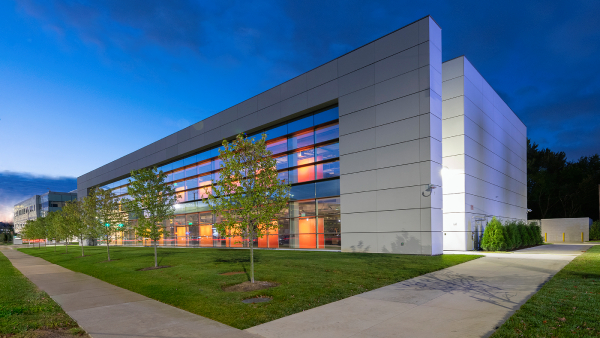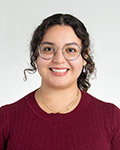Overview

What is a BioRepository?
Biorepositories (or biobanks) store biological specimens such as blood, plasma and urine with valuable, de-identified clinical information from the patients or research participants who supplied the specimens. Similar to a library, researchers and physician-scientists can “check out” donated samples and correlating data for scientific study with the goal of understanding how genetics, lifestyle and environment interact to affect health. Understanding these risk factors on an individual and population level helps doctors treat or prevent diseases that can influence your health and the health of future generations.
About Cleveland Clinic’s BioRepository
Each year Cleveland Clinic Main Campus provides services for more than 4 million patient visits, 500,000 blood draws and 50,000 surgeries.
Cleveland Clinic’s BioRepository collects biological samples and associated health information from these services to be used for medical research. A biorepository is like a library. It is a resource built by and for communities and stores voluntarily donated samples and health data that can be used for scientific research.
Cleveland Clinic’s BioRepository collections are stored in a 22,000-square-foot facility with ultra-cold and cryogenic storage for biological samples that will be used in research projects at Cleveland Clinic, partner institutions and the life science research community. The facility is managed by Azenta Life Sciences, a provider of sample exploration and management solutions with secure sample and material storage facilities across the United States and around the world. The facility is the first building to open in the recently announced Cleveland Innovation District, a public-private partnership aimed at transforming Northeast Ohio into an economic engine for biomedicine. The initiative brings the State of Ohio, JobsOhio and Ohio Development Services Agency together with Cleveland’s healthcare and higher education institutions to create jobs, accelerate research and educate the workforce of the future.
How is my help important?
The goal of Cleveland Clinic’s BioRepository is to leverage better care that is just for you. This type of care is sometimes called precision medicine or personalized medicine. Two people with the same diagnosis may have different responses to treatment. By studying lifestyle, cultural, social and economic factors as well as individual genes we can target treatment directly to you with the goal of fewer side effects and better outcomes.
About Cleveland Clinic
We are a non-profit multispecialty academic health system that integrates clinical and hospital care with research and education. Learn more about us.
Faculty & Staff
Lara Jehi, MD
Director, BioRepository
Chief Research Information Officer
Director, Center for Computational Life Sciences
Suzy Comhair, PhD
Scientific Director

Ling Zhao, MD, PhD
Technical Director

June Cassano
Sr. Director, Center for Clinical Research

Rebecca Algeri
Administrative Director, Center for Clinical Research

Robert Hartley
Research Administrator

Alyssa Dabrowski
Project Manager

Nicole Corchero
Research Coordinator

Caitlin Raid
Research Coordinator

Praneeth Polu
Database Developer
Governance & Oversight
Data Governance at Cleveland Clinic
Cleveland Clinic is a data-driven organization where data is valued as an enterprise asset. Health care reform, value-based reimbursement and changing expectations create a need to provide both data quality and transparency. With the healthcare environment constantly changing, we have created specific principles to provide mature and nimble Data Governance.
BioRepository Governance
Cleveland Clinic’s BioRepository Governance Committee is responsible for developing and maintaining guidelines for the utilization and prioritization of biospecimens. These Governance Principles will be reviewed regularly and amended as required.
Cleveland Clinic’s BioRepository Review Committee
All requests for samples and data will be reviewed by Cleveland Clinic’s BioRepository Review Committee and will be provided for specific uses only. Any change in project scope must be approved, and resources will not be provided for unspecified use. Requests will be reviewed and prioritized according to the following metrics:
Quality
- Scientific excellence.
- Robust methodology.
- Ethical soundness.
Value
- Complementary to existing projects.
- Potential impact on public health.
- Potential to improve patient care.
- Alignment with enterprise goals.
Quantity
- Number of subjects/specimens.
- Number and type of sample requested.
- Volume of data.
Funding Status
- Obtained or pending.
- Public, private or both.
Institutional Review Board
The Cleveland Clinic Institutional Review Board (IRB) is an administrative body established under federal regulations to adequately protect the rights, safety and welfare of research participants and to uphold the ethical principles for human subject protections. All human subjects’ research studies are reviewed by the IRB and must have IRB approval before the study can begin.
Community
Cleveland Clinic’s BioRepository collections are stored in a 22,000-square-foot facility, two-story building located on Cedar Avenue in Cleveland’s Fairfax neighborhood. The facility is managed by Azenta Life Sciences, a provider of sample exploration and management solutions with secure sample and material storage facilities across the United States and around the world. The building will serve as a community resource beyond Fairfax to improve awareness of ongoing research and opportunities for careers in the medical field. The BioRepository is the first building to open in the recently announced Cleveland Innovation District, a public-private partnership aimed at transforming Northeast Ohio into an economic engine for biomedicine. The initiative brings the State of Ohio, JobsOhio and Ohio Development Services Agency together with Cleveland’s healthcare and higher education institutions to create jobs, accelerate research and educate the workforce of the future.
Research Access Center
The Research Access Center is a community resource which will be housed in the building and will ensure that our research serves all populations, addresses differences in health outcomes and helps us educate the next generation of researchers.
Mission
The mission of the Research Access Center is to address the growing impact of differences in health outcomes through research by Cleveland Clinic physicians and scientists in partnership with members of the local community.
Purpose
- Provide education about collecting specimens and why it is important: specimen collection from diverse populations, varied in age, sex, race, ethnicity, and clinical diagnoses, helps foster scientific discoveries that improve health outcomes.
- Improve awareness of ongoing research, and engage the community to participate.
- Provide education about current and relevant health issues / improve health literacy.
- Empower the community to engage in their health care with Cleveland Clinic.
- Provide a place for people to donate specimens.
One Size Doesn’t Fit All
Historically, participation in medical research has included a disproportionate number of white males, and the vast majority of medications developed to treat diseases, including hypertension, diabetes, heart disease and cancer have primarily been tested in white populations. We now understand that people from different racial and ethnic backgrounds respond differently to treatment and medications. It is vitally important for a diverse pool of participants to participate in clinical research trials (including donating blood and other specimens) for the purposes of scientific research. Such research helps scientists discover and develop new ways to more effectively treat the many diseases that disproportionately afflict these individuals.
For more information on health disparities in the United States, please visit the website below:
Cleveland Clinic has a proud history of serving the needs of the residents of Cleveland and surrounding communities. We provide programs that improve the health and vitality of our community, offering health education for the public and medical professionals, facilitating research to improve patient care and providing charity care. Learn more about the Cleveland Clinic Community Commitment.
Research as a Community Benefit
The vision of Cleveland Clinic is to treat our neighbors as our family and our community as our home, with the goal of helping create the healthiest communities for everyone. We work toward this goal through actions and programs that heal, hire and invest in the future. Our community benefit – the programs and services we provide to meet community needs – include charity care, education and community health initiatives as well medical research.
Public Artwork
Inspired by the solace found in video game fantasy worlds during his childhood hospitalization with osteogenic sarcoma, internationally renowned artist Jacolby Satterwhite is creating a public artwork to be situated on the site of Cleveland Clinic’s BioRepository. Developed in collaboration with residents of the immediate surrounding Fairfax neighborhood, the powerful video installation will amplify local voices, explore art as a form of healing and serve as a lasting link to the community.
Titled Dawn, the artwork is an outdoor 3D animated virtual reality video that will be displayed on a screen embedded in a freestanding wall that is clad with artist-designed wallpaper. In addition to the screen outside the BioRepository, the public can view the video on smartphone devices.
The source material for Satterwhite’s animation comes from Fairfax residents and Cleveland Clinic caregivers. With the assistance of a community facilitator, participants were asked to create a sketch or brief text describing a utopic future for the neighborhood. Those contributions have been transformed by Satterwhite and woven into his video to create a tribute to residents’ observations, hopes and dreams.
Karamu House President and CEO Tony Sias observes, “The project provides broad access for community involvement.” Satterwhite is excited by the opportunity to create a video that in his words “delivers optimism, mindfulness and prospects for a positive future.”
About the Artist
Celebrated artist Jacolby Satterwhite is known for his immersive animated virtual reality videos. Satterwhite uses video game language and found materials to create triumphant and optimistic works that celebrate the lived experiences of his family, friends and community.
Satterwhite was born in 1986 in Columbia, South Carolina. He received his bachelor’s degree in fine arts from the Maryland Institute College of Arts, Baltimore and his master’s degree in fine arts from the University of Pennsylvania, Philadelphia. His work has been presented in numerous exhibitions in the United States and in Europe, including Fabric Workshop & Museum, Philadelphia (2019); Whitechapel Gallery, London (2019); the Museum of Modern Art, NY (2019); and the Minneapolis Institute of Art, MN (2019). His work is included in the collections of the Museum of Modern Art, NY; Studio Museum in Harlem, NY; and the Whitney Museum of American Art, NY. In 2019, Satterwhite collaborated with Solange Knowles on her visual album, “When I Get Home.”